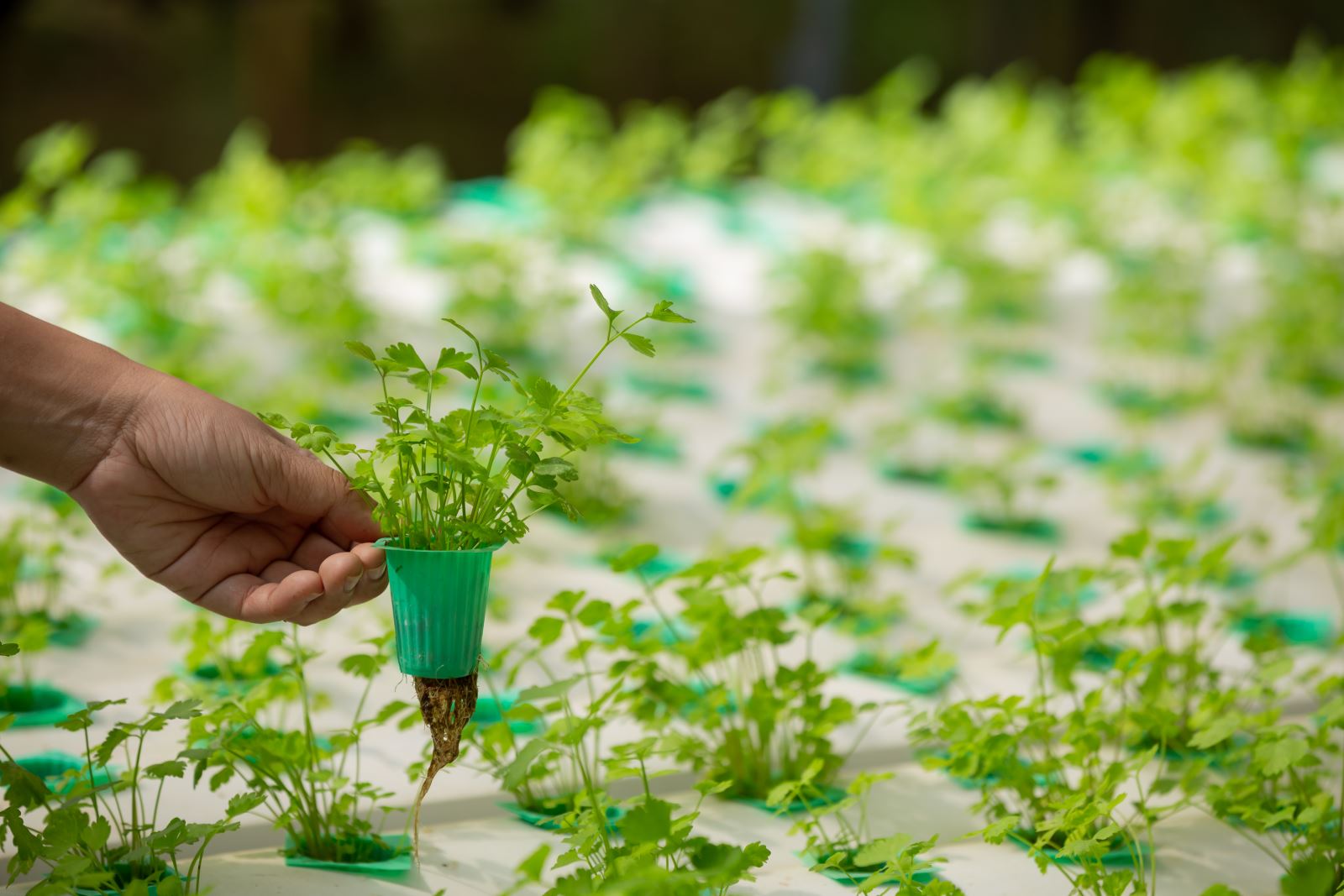As the population of our planet increases and arable land available for crop production declines, agriculture is moving towards more capital-intensive solutions. What plants need is sunlight, in addition to water and nutrients, both are easily obtained from soil. Farmers use hydroponics to grow plants that need hard-to-maintain soil conditions. This technique depends on growing plants in nutrient solutions with or without the use of an artificial medium to provide mechanical support.
The word “hydroponics” literally means growing plants in water, but now it is applied to growing plants in any other medium besides soil. Hydroponics is believed to be in use for thousands of years; the Hanging Gardens of Babylon are largely believed to have functioned according to hydroponic principles. The Aztecs also developed a system of floating gardens based on hydroponics.
With hydroponics the plants are grown in an inert growing medium, which is an inert substance that does not supply any nutrient to the plant. A perfectly balanced pH adjusted nutrient solution is delivered to the roots in a highly soluble form. It is easy to control the strength and the pH of the nutrient solution, so that the plants receive the right amount of food. This allows the plant to uptake its food with very little effort as opposed to soil where the roots must search out the nutrients and extract them.
There are many different types of hydroponic systems, though each is based on the same basic concepts.

Ebb and Flow System: Also known as flood and drain system, it includes a tray in which the plant is placed in a medium; below the tray in a separate container is a reservoir containing water and mineral solutions. A timer is set to periodically activate a pump that is kept in the nutrient reservoir. When activated, the pump floods the tray with the nutrient solution, feeding the plants the nutrients they require for optimal growth. This system works best with small plants such as herbs and are typically used at home.
Drip System: Vital nutrients are added to a tank of water to create a nutrient reservoir that is kept away from plants. The water is then pumped up a network of tubes, and is released to the plants individually; the pump can be controlled using a timer. This system is ideal for plants that do not have a developed root system such as smaller plants, just like the Ebb and Flow Systems.
Nutrient Film Technique (NFT): A water-based system that requires no soil or mediums, it is built using wooden channels; water enriched with nutrients is pumped to the high end of each channel. The channels slope down, and water is collected at the end to be pumped back through the system and reused. Only plants with large established root systems will work with this system, such as tomatoes and cucumbers.
Aeroponics: In this system, the plants are suspended in the air, with their roots hanging down below. The nutrient solution is then pumped up a tube, where a second higher pressure pump sprays the solution as a mist over the hanging roots. This system is the most difficult to set up and manage, but it has great potential for large commercial uses.
Wick Systems: Medium-based, plants are placed into a tray filled with perlite or rockwool; at the base of each root, a nylon rope is placed and is allowed to dangle freely, extending to the bottom of the tray. The tray is placed on top of a reservoir; the nylon ropes absorb the water and nutrients, wicking them up to the plant’s roots. This system is preferable as it requires no pumps or other equipment to be purchased.
.jpg)
There are significant environmental benefits to the use of hydroponics systems; they only require around 10% of the water that soil-based agriculture requires. This is due to the fact that hydroponic systems allow recycling and reuse of water and nutrient solution, so in this case no water is wasted. As many pests are carried in soil, hydroponics eliminates the massive use of pesticide, effectively making air, soil, and food cleaner, also preventing diseases carried by them. Moreover, it requires only around 25% of fertilizers.
Since plants grown hydroponically have direct access to water and nutrients, they are not forced to develop extensive root systems to allow them to find nutrients they need. This saves time and produces healthier plants in about half the time as traditional. Hydroponics is ideal for indoor growing, so it can be used to grow plants all year round.
Hydroponics technique is the fastest growing sector of agriculture, and can be a solution to the world’s growing concerns such as diminishing soil, water scarcity, and food scarcity.
References
homehydrosystems.com
explainthatstuff.com
simplyhydro.com
This article was first published in print in SCIplanet, Autumn 2015.
Images: Freepik.com